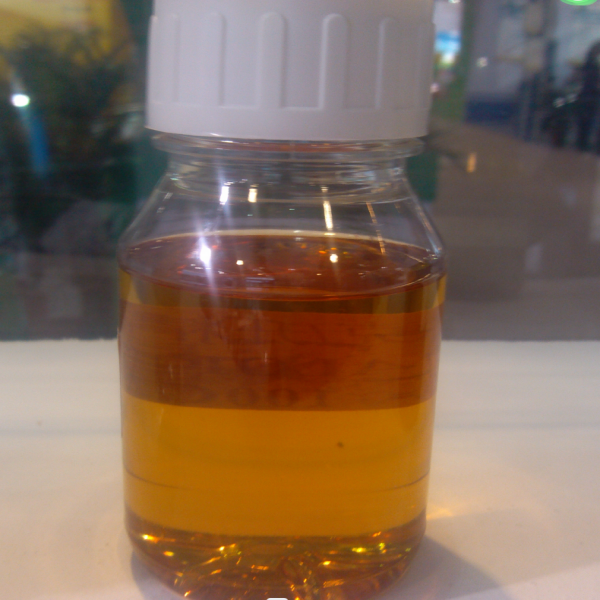
nov . 27, 2024 21:40 Back to list
Myclobutanil and Azoxystrobin Usage Trends in China Agricultural Practices
Myclobutanil and Azoxystrobin Key Players in Agricultural Fungicides
In the realm of modern agriculture, the fight against plant diseases is a constant challenge that demands effective solutions. Among the many tools available to farmers, fungicides play a pivotal role in protecting crops from detrimental pathogens. Two of the widely used fungicides are Myclobutanil and Azoxystrobin, both of which have demonstrated efficacy in enhancing crop yields and ensuring food security.
Myclobutanil
Myclobutanil, a systemic fungicide belonging to the triazole class, is primarily used to combat a variety of fungal diseases in crops such as cereals, fruits, and ornamental plants. Its mode of action involves inhibiting the synthesis of ergosterol, a critical component of fungal cell membranes. This disruption not only hampers the growth and reproduction of the fungi but ultimately leads to cell death.
One of the significant advantages of Myclobutanil is its broad-spectrum activity against several fungal pathogens, including those responsible for diseases such as powdery mildew and leaf spots. Its systemic nature ensures that it can be absorbed by the plant and transported to various tissues, providing protection not just on the surface but throughout the plant’s internal structures.
In China, Myclobutanil has gained popularity among farmers due to its effectiveness and relatively low risk to non-target organisms when applied according to recommended practices. The versatility of this fungicide makes it suitable for a wide range of crops, contributing to increased agricultural productivity and sustainable farming practices.
Azoxystrobin
Azoxystrobin is another vital fungicide, belonging to the strobilurin class, which is renowned for its unique action mode. This compound works by inhibiting mitochondrial respiration in fungi, effectively blocking the energy production necessary for fungal growth and reproduction. Azoxystrobin is typically used for controlling diseases such as downy mildew, rusts, and blights in various crops, including vegetables, fruits, and grains.
china myclobutanil or azoxystrobin

One of the standout features of Azoxystrobin is its protective and curative effects. Not only does it prevent fungal infections, but it can also halt the spread of established diseases. This dual action makes it a cornerstone in Integrated Pest Management (IPM) strategies, providing farmers with a flexible and reliable tool in managing plant health.
Furthermore, Azoxystrobin is praised for its extended residual activity, enabling prolonged protection of crops between applications. This characteristic is particularly beneficial in regions where environmental conditions favor rapid disease development.
The Role of Both Fungicides in Integrated Pest Management
The application of Myclobutanil and Azoxystrobin in crop management emphasizes the importance of diversification in disease control strategies. By utilizing products with different modes of action, farmers can mitigate the risk of resistance development, a significant concern in agricultural practices. This is crucial for ensuring the long-term efficacy of fungicides and maintaining crop health.
Moreover, both fungicides have been subject to rigorous safety evaluations, which are essential in ensuring their minimal impact on human health and the environment. When used according to guidelines, they can significantly enhance crop resilience, ultimately supporting food production systems essential for feeding the growing global population.
Conclusion
In summary, Myclobutanil and Azoxystrobin stand out as effective fungicides that play integral roles in contemporary agriculture. Their unique properties not only protect crops from diseases but also enhance overall agricultural productivity. As farmers continue to face challenges posed by plant pathogens, the use of these fungicides in a structured and responsible manner can ensure sustainable farming practices and contribute significantly to global food security. The evolution of fungicide technology, combined with effective agricultural management strategies, will undoubtedly shape the future of farming in China and beyond.
-
Kasugamycin Fungicide: Efficient Bacterial & Fungal Control
NewsAug.02,2025
-
Emamectin Benzoate: AI-Optimized Pest Control Solution
NewsAug.01,2025
-
Best Abamectin 95% | Top Pesticide for Crop Protection
NewsJul.31,2025
-
Insecticide Spirotetramat 11% + Thiacloprid 11% SC at Good Price
NewsJul.30,2025
-
Best Abamectin SDS - Premium Quality & Reliable Safety Data
NewsJul.29,2025
-
Agrochemicals Pesticides Solutions for Sustainable Farming
NewsJul.29,2025
